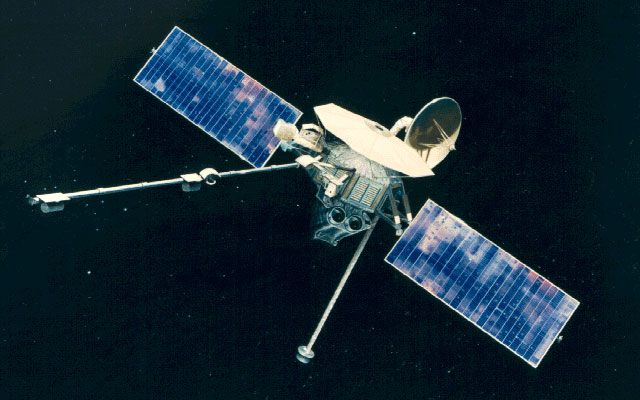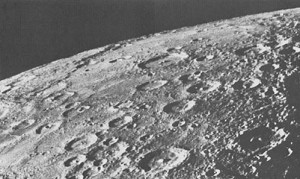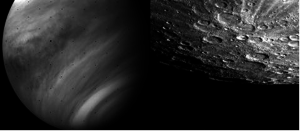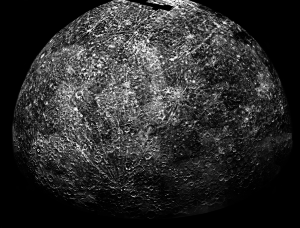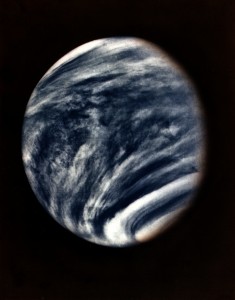42 years ago on March 29, NASA’s Mariner 10 mission became the first spacecraft to visit Mercury.
At the time of its launch, little was known about our planetary neighbors. Scientists were particularly interested in Mercury’s core and how Venus interacts with the solar wind. Despite mission challenges that included losing data transmissions, attitude control fuel problems and a flight data system that continually reset itself, Mariner 10 successfully reached Mercury after being the first spacecraft to use a gravity assist of one planet (Venus in this case) to reach another. The mission tested out new navigational techniques that would be used on future missions and also became a demonstration of how to adapt missions to changing circumstances on the fly- an important skill that NASA continues to use today.
Mariner 10 was the first two-planet exploration mission, providing valuable data on both Mercury and Venus. Pictures of Mercury’s surface showed craters and bare ground that looked similar to Earth’s moon and instruments detected a faint helium atmosphere in addition to a small magnetic field with a strength about one-sixtieth that of Earth’s. The mission also showed that the strength of Venus’ magnetic field was one-twentieth the strength of Earth’s, meaning it cannot not shield Venus to the same extent that Earth’s field does, nor do large clouds of particles congregate near the belts of Venus like they do near Earth.
Mariner 10’s most famous contribution to the public consciousness was a photograph of Venus which shows that a thick cloud layer with swirls and patches covers the planet, implying a very active atmosphere.

